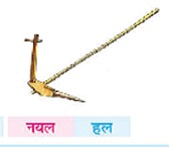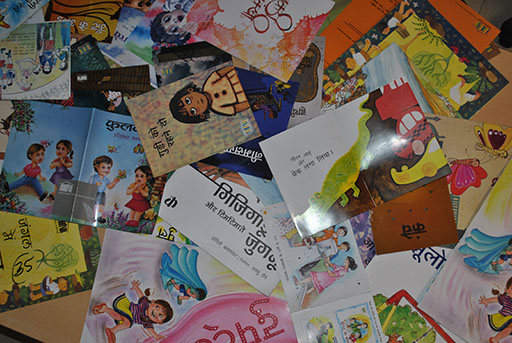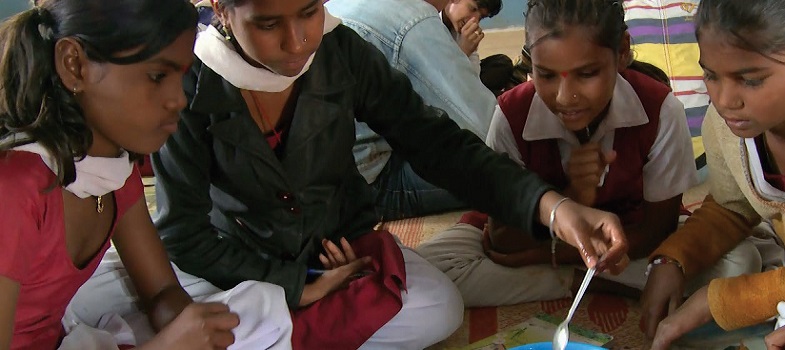2 Valuing multilingualism in the classroom
Activity 2: A class language survey
Undertake a language survey with your class. Start by talking to your students about the languages you know – perhaps clarifying whether you can understand a few words, speak the language fluently or write it – and explaining how you gained that knowledge, be this from your parents or grandparents, from living somewhere, or from studying it in school, for example.
Using chart paper, make a large table. Write with your name, followed by your students’ names, down the left-hand side, and a list of languages across the top. Invite your students to state which languages they know and add ticks to the chart accordingly. When you have finished, put the survey chart up on the classroom wall.
If any students are absent on the day you do the survey, be sure to update the chart on their return. Insert extra rows at the bottom in case any new students join the class during the year. You may wish to survey the head teacher and other members of staff and add this information, too.
Depending on the age of your students, you could make the survey more detailed by noting whether they can understand, speak, read or write the languages have mentioned.
Pause for thought
|
Discriminatory perceptions of low-status castes may mean that some students are reluctant to ‘admit’ to knowing some of the languages associated with these communities. In this activity it is therefore important to positively emphasise the value that knowledge of different languages and cultures brings to people’s lives in general and the classroom in particular. Talk about your own knowledge of minority languages, even if it is limited, or your wish to learn them.
The fact that the distinction between languages and dialects is often fluid, or the possibility that students may not know the names of the languages they speak, are other reasons why it is not always straightforward to obtain precise information about such knowledge. Your chart should therefore be viewed a starting point, with students helping to amend the information over time.
Case Study 2: Using local language words
In the following case study from Jharkhand, a teacher describes how some of their students were confused by the words used to illustrate letters on the alphabet chart on the wall.
Most of my students are Ho speakers and know very few Hindi words when they first come to school. I noticed that some students were telling me the wrong words represented by the pictures on the Hindi alphabet chart on the classroom wall. They said ‘nayal’ (the Ho word for ‘plough’) instead of ‘hal’ (the Hindi word for ‘plough’). When I asked them what letter was represented, the students told me that it was ‘n’, the first letter for ‘plough’ in the Ho language, rather than ‘h’, the first letter of ‘plough’ in Hindi.

I knew that I needed to help my students to learn the names and sounds of the Hindi letters correctly, so I made an alphabet chart using words from the Ho language. In this is way, they could learn the letter–sound correspondences of the Hindi alphabet more easily. I then helped them to learn the Hindi illustrative words as well. This helped them build up their Hindi vocabulary too.
Having read the case study, now try the following two activities, which focus on multilingualism in your classroom.
Activity 3: Making an alphabet chart
Might any of your younger students get confused by the words represented by the pictures illustrating the Hindi alphabet chart?
Find suitable words in their home language and use them to make an alphabet chart or book that helps your students to learn the Hindi letters. If you are not sufficiently familiar with their home language, ask colleagues, members of the community or the students themselves to suggest suitable words. Involve your students in cutting out and pasting the pictures into the chart or book as well.
Activity 4: Incorporating multilingual practice in your classroom
How can you acknowledge and value the different languages that your students bring to the classroom?
Start a list of ideas. Talk to your colleagues or visit their classrooms for inspiration. Choose one to implement in your classroom over the next month. Some suggestions are listed below.
Greetings
Ask your multilingual students to teach their classmates a greeting in their home language. Develop a routine whereby, at the start of the day, you greet your students in the school language, and then in each of their home languages, with the whole class responding to the series of greetings accordingly. Do the same to say goodbye at the end of the school day.
Labels
Label the features of your classroom (such as the window, door, blackboard, cupboard) in both Hindi and your students’ home language. Use different-coloured pens or card to help distinguish the different languages. If your multilingual students are literate in their home language, they can help to write the translated labels themselves.
A multilingual word wall
Create an evolving word wall in your classroom, by posting up useful words and expressions in your students’ home languages (for example, ‘hello’, ‘goodbye’, ‘sorry’, ‘thank you’). Seek out opportunities to invite your students to contribute new words. Use different-coloured pens or card to distinguish the languages, as with the labels above.
Multilingual reading material
Start a collection of books, magazines, leaflets and other reading materials in the languages that your students speak and add these items to your reading corner (Figure 2).

Multilingual dictionaries
Involve your students in creating bilingual or multilingual dictionaries. Depending on your students’ needs, these dictionaries could focus on simple words and pictures, vocabulary relating to everyday topics (such as school, home, the park, body parts, animals) or subject-specific terms (pertaining to maths, science and environmental science, for example).
If your students are studying English, they could compile a multilingual dictionary that lists words in English, Hindi and their home language. Leave the dictionaries in an accessible place for all you students to look at. Keep a list of new words and set aside a time for your students to add these and others to the dictionary on a regular basis.
1 Introducing the multilingual classroom
